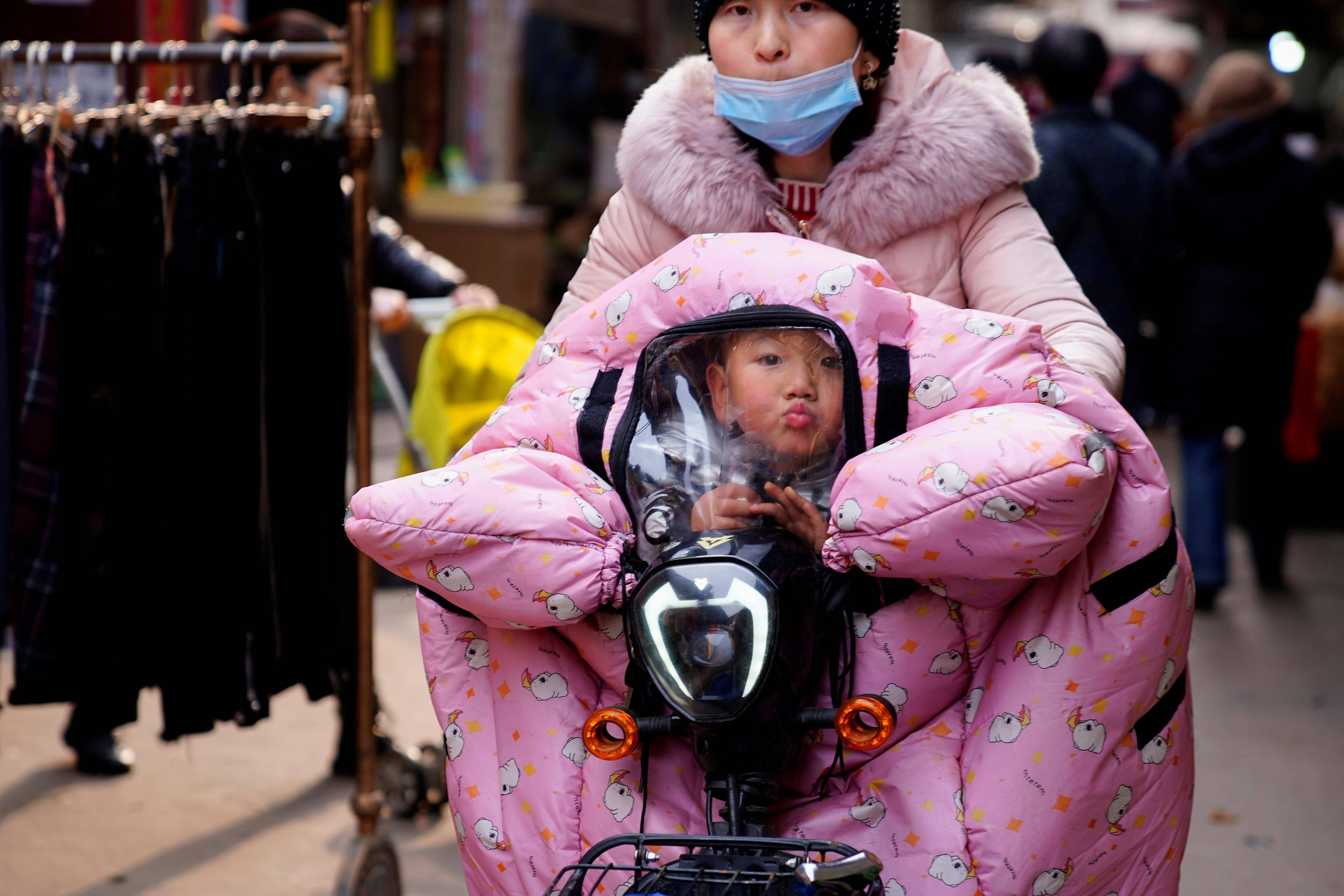
- A woman wearing a face mask rides a bicycle with a child, following an outbreak of the coronavirus disease in Wuhan, Hubei province, China.
- Relaxation in one-child policy in 2016 fails to spark a baby boom.
After decades of a “one-child policy”, Beijing changed the rules in 2016 to allow families to have two children as fears grew about China’s fast-ageing population and shrinking workforce.
Figures from the Public Security Ministry released on Monday showed there were 10.04 million registered births in 2020, which is 15 per cent down from the figure of registered births reported early last year for 2019.
In the same month, the official statistics bureau reported a higher figure of 14.65 million babies born in 2019 — more than 30 per cent above the latest birth data reported this week.
The data also points to a fourth consecutive year birth numbers declined.
The number of registered births is typically lower than the actual number of births later announced in China, as not all parents register their children immediately.
The gender balance was 52.7 per cent boys and 47.3 per cent girls, according to the data.
One user on China’s Twitter-like Weibo platform noted the birth figure was “lower than the number of people taking the college entrance examination”, adding that ageing was going to become more serious in decades to come.
Another called the low rate “the biggest crisis the Chinese nation is facing”.
China introduced the one-child policy in the late 1970s in a dramatic effort to slow rapid population growth, before reversing it in 2016.
But the change has not yet resulted in a baby boom, with empowered Chinese women often delaying or avoiding childbirth and young couples blaming rising costs and insufficient policy support for families.
“If the whole society regards childbearing as a pain, then there is a problem in this society,” cautioned another on Weibo.
The data also comes after the Covid-19 pandemic wreaked havoc in the global economy, with many families nervous about job security.
In November, China started a once-a-decade census, with much of the attention on whether it indicates any population bump from the relaxation of family planning rules.
Demographic experts have estimated it could take 15 years for the two-child policy to have any noticeable effect on population numbers. Chinese retirees, meanwhile, are expected to number 300 million by 2025.
Chinese state media in December quoted civil affairs minister Li Jiheng as saying the country’s fertility rate has “dropped dangerously”, well below the population replacement rate of 2.1 births per woman.






No comments :
Post a Comment